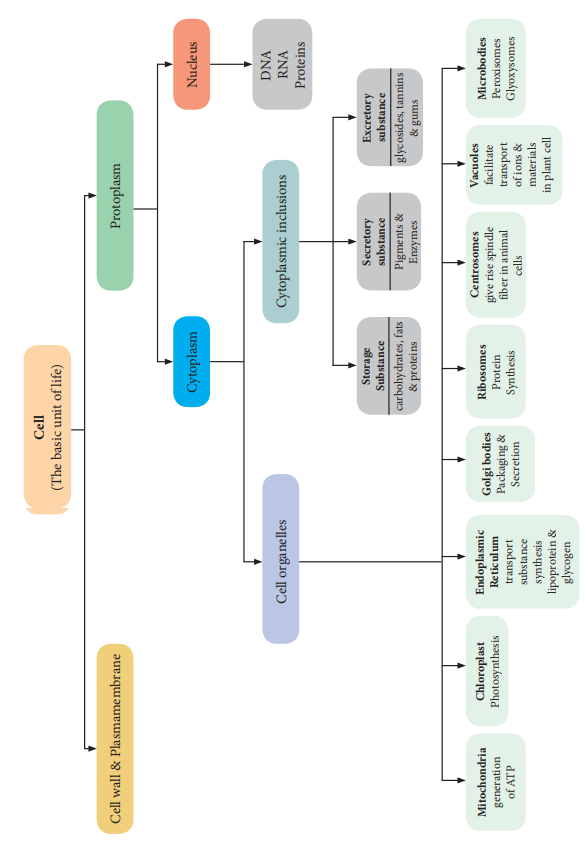Botany - Summary - Cell: The Unit of Life | 11th Botany : Chapter 6 : Cell: The Unit of Life
Chapter: 11th Botany : Chapter 6 : Cell: The Unit of Life
Summary - Cell: The Unit of Life
Cell is the fundamental unit of
all organisms which was identified 300 years ago. Microscope offers scope for
observing smaller objects and organisms. It works on the principle of light and
lenses. Different microscope offers clarity in observing objects depending on
the features to be observed. Micrometric techniques are used in measurement of
microscopic objects. Electron microscopes are used in understanding the
ultra-structural details of cell. Cell theory and doctrine states that all
organism are made up of cell and it contains genetic material. Protoplasm
theory explains nature and different properties of protoplasm. Cell size and
shape differ from type of tissue or organs and organisms. Based on cellular
organization and nuclear characters the organisms are classified into
prokaryote, eukaryote and mesokaryote.
Concept Map

The eukaryotic cells originated
by endosymbiosis of prokaryotic organism. Key difference between plant cell and
animal cell is the cell wall. Protoplasm is the colourless mass includes the
cytoplasm, cell organelles and nucleus. Cell wall is the outermost protective
covering with three regions primary, secondary wall and middle lamellae. Cell
membrane holds the cytoplasmic content called cytosol. Cytoplasm includes the matrix and the cell organelles
excluding nucleus. Endomembrane system includes endoplasmic reticulum, golgi
apparatus, chloroplast, lysosomes, vacuoles, nuclear membrane and plasma
membrane. Nucleus is the control unit of the cell, it carries hereditary
information. Chromosomes are made up of DNA and associated proteins. Bacterial
flagella are made up of helical polymers of a protein called flagellin. Proton motive force are
involved in flagellar rotation. In Eukaryotes flagella are made up microtubules
and protein called dynein and nexin and the movement is driven by
ATP. Cytological techniques include preparation of slides, staining and
recording the observation.
Related Topics